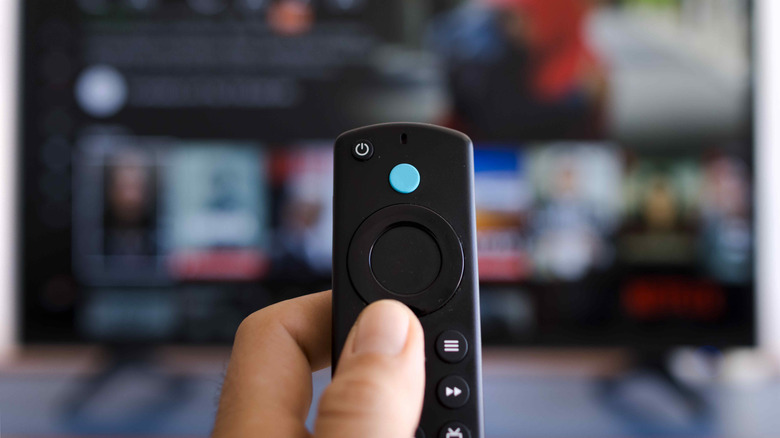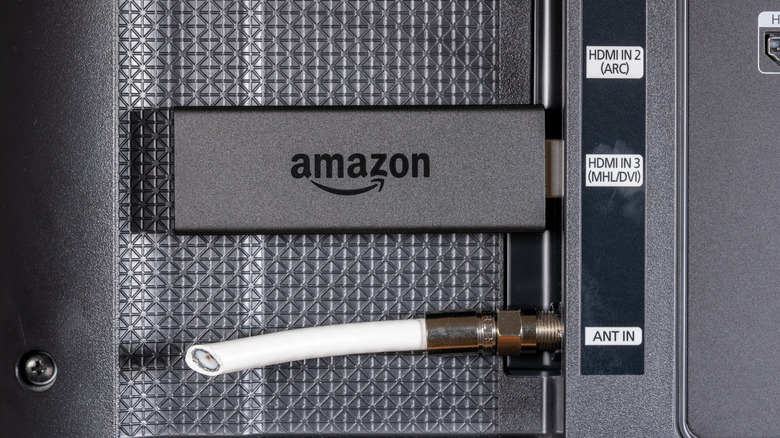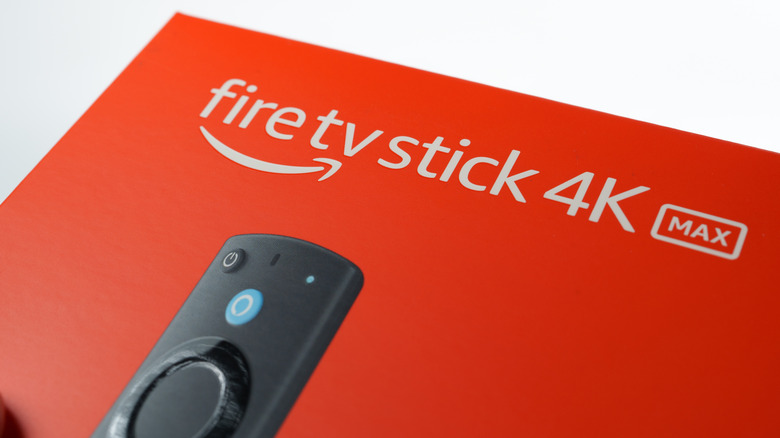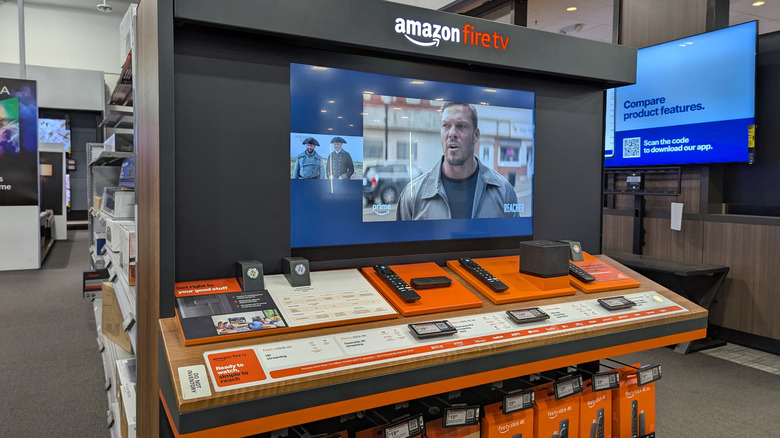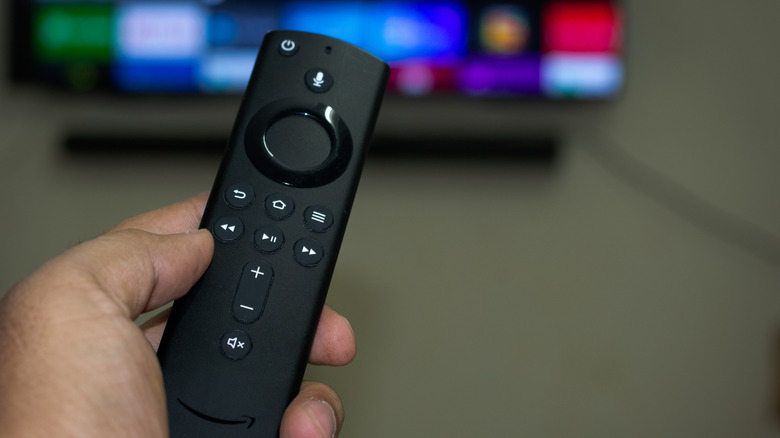How Amazon Fire TV Stick 4K Max 2nd Gen Compares To 1st Gen: Should You Upgrade?
We may receive a commission on purchases made from links.
Amazon's lineup of Fire TV streaming devices and smart TVs is forever evolving, to the point that we now have more than one generation of the same product. One of the most popular Fire TV streamers, the Amazon Fire TV Stick 4K Max, has two iterations: a 2021 edition and a newer 2023 model. If you own one of the older 4K Max models, you may be pondering whether it's worth upgrading to the newer version. Or, maybe you're thinking if it's going to save you a buck or two, perhaps you should go with the older hardware.
Unfortunately, it's been a minute since Amazon sold the 2021 edition brand-new, so even if you're able to get your hands on the older 4K Max, it's going to be through a third party. In any case, there are still a number of differences between the 2023 and 2021 4K Max worth mentioning. Here's everything you need to know about how the second-gen Amazon Fire TV Stick 4K Max (2nd Gen) compares to its first-gen relative.
Amazon's Fire TV software and processor
When it comes to any Amazon Fire TV streaming device or smart TV, Fire TV OS is the captain of all ships. This operating system is actually built on top of Android, with the 2023 4K Max running Fire OS 8 (based on Android 11), and the 2021 model running Fire OS 7 (based on Android 9). As far as performance goes, Fire OS 8 is able to offer improved system performance, better security, and enhanced app support, thanks to its more advanced Android 11 building blocks.
Fire OS 8 grants the newer 4K Max access to higher-level sound codecs and a more refined HDR experience. Users should also experience smoother UI navigation, animations, and load times, along with support for Fire TV's Ambient Experience and app compatibility. As far as processing power goes, both versions of the Fire TV Stick 4K Max use a MediaTek MT8696. The 2023 edition also features slightly boosted CPU and GPU performance over the 2021 model.
Wi-Fi and Bluetooth differences
From one streamer generation to the next, you'll typically see upgrades when it comes to Wi-Fi and networking, and Amazon's 4K Max is no exception. The 2023 4K Max supports the newer Wi-Fi 6E standard, compared to the Wi-Fi 6 support you'll find on the 2021 model. This isn't necessarily a deal-breaker, but Wi-Fi 6E does deliver faster internet speeds and far less network congestion overall.
Do keep in mind that in order to experience Wi-Fi 6E benefits, you'll also need to be using a Wi-Fi 6E-compatible router. For those who have owned the 2021 4K Max since it first released, an older dual-band router with 2.4GHz and 5GHz broadcasting is all you'll need.
It's a similar story when it comes to the 4K Max's Bluetooth capabilities: The 2023 edition runs on Bluetooth 5.2 and also supports Bluetooth Low Energy (BLE), whereas the 2021 4K Max runs on Bluetooth 5.0 and doesn't support BLE. As you can guess, the former (5.2 + BLE) is the better of the two, especially when it comes to audio quality. While there is some range difference between Bluetooth 5.2 and Bluetooth 5.0, devices like Bluetooth remotes and wireless earbuds won't disconnect from one 4K Max faster than the other.
Picture and sound quality of the Fire TV stick
Both the 2023 and 2021 4K Max are exemplary when it comes to HDR support, so you can expect excellent peak brightness levels and rich colors when watching films and shows encoded for HDR playback. When connected to an HDR-capable TV, both of these Amazon devices offer support for every HDR format, including Dolby Vision.
Believe it or not, both generations are pretty neck and neck when it comes to audio capabilities, too. Still, there is one easy-to-overlook but potentially critical difference: Dolby TrueHD with Atmos. The 2023 4K Max supports Dolby TrueHD, which means the 4K Max is able to send an uncompressed 7.1 audio track to a compatible AV receiver or soundbar over its HDMI ARC connection. You'll still get Atmos support on the 2021 4K Max, but it's limited to Dolby Digital 5.1 with Atmos, which isn't as detailed or immersive as the Dolby TrueHD format.
Storage space for both versions of Fire TV
No one wants to hit a cap on app downloads, so which of the two 4K Max models can hold more software? The 2023 edition, of course. In fact, the 2023 Max actually doubles the 8GB of storage you get on the 2021 model. But more than just a wider trove of bytes for downloading movie and TV show content, the 2023 4K Max's 16GB storage also allows for side-loading for those of us looking to add third-party platforms to our Fire TV Sticks.
There are those of us who enjoy modifying the tech devices we buy, and if you're going to put your Amazon streamer through one or several software experiments, you'll thank yourself for investing in those extra bytes down the line. Also, working with double the storage space means the 2023 4K Max should experience less overall buffering and lag, too, especially as the Fire TV Stick reaches its storage limit.
The bottom line between both Fire TV versions
If you don't own a Fire TV Stick at all, we recommend going with the 2023 Amazon Fire TV Stick 4K Max. You'll be able to find this device on Amazon and other noteworthy retailers for around $60, though it's often on sale for less. Yes, it's pretty similar to its 2021 counterpart, but when you really break things down, the 2023 edition has the edge when it comes to speed and connectivity, audio reproduction, and storage space.
For those still on the fence about upgrading to the newer 4K Max from the 2021 edition, unless a 7.1 Atmos-enhanced speaker system is in your future, sticking with the older hardware should be just fine. But don't forget: Amazon isn't the only horse in the race when it comes to streaming devices and smart TVs. Companies like Roku, Apple, and Google, with the Google TV Streamer, also have exceptional streaming tech on the market. These devices cost a bit more than the 2023 Fire TV Stick 4K Max, but they might be the better choice for those running a Google Home or Apple ecosystem.
